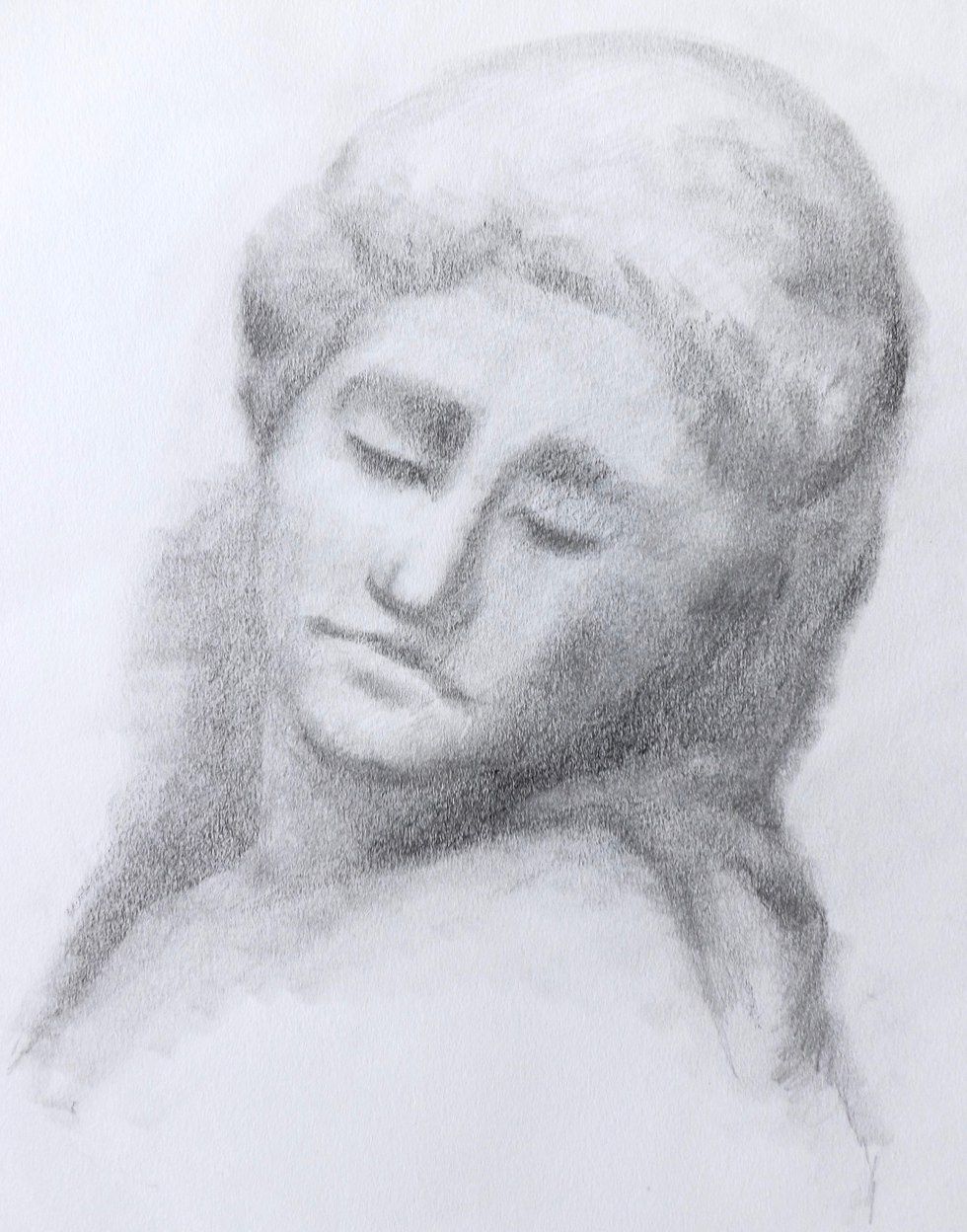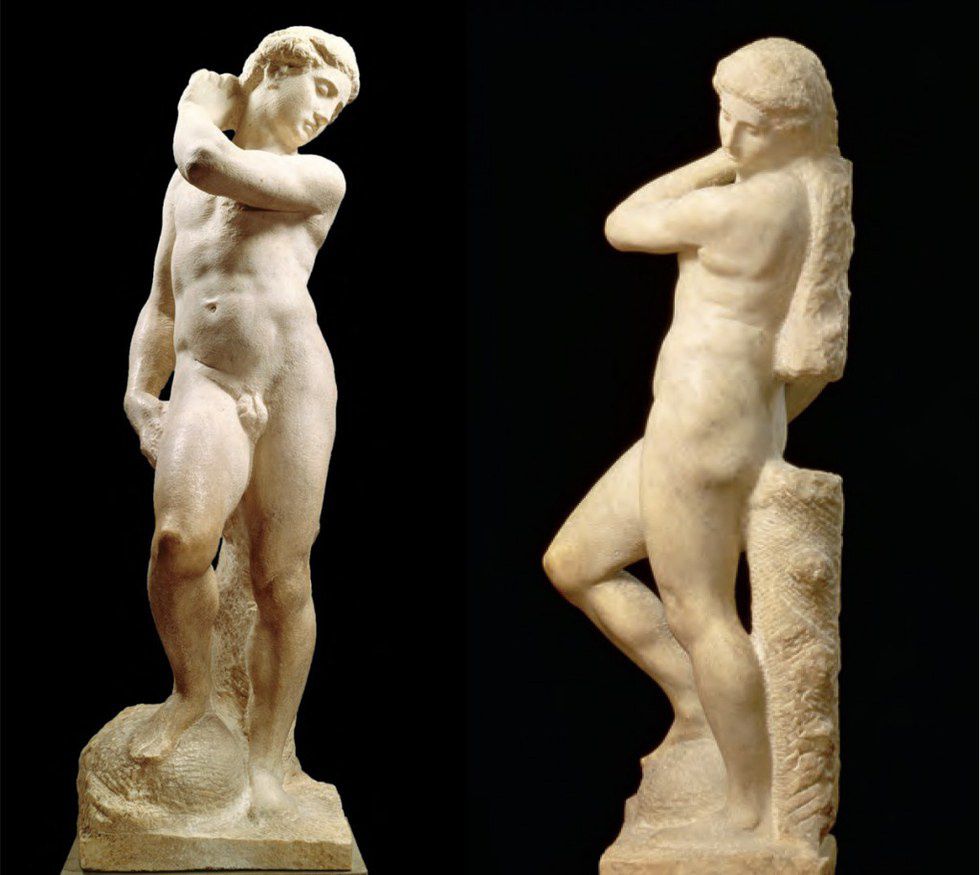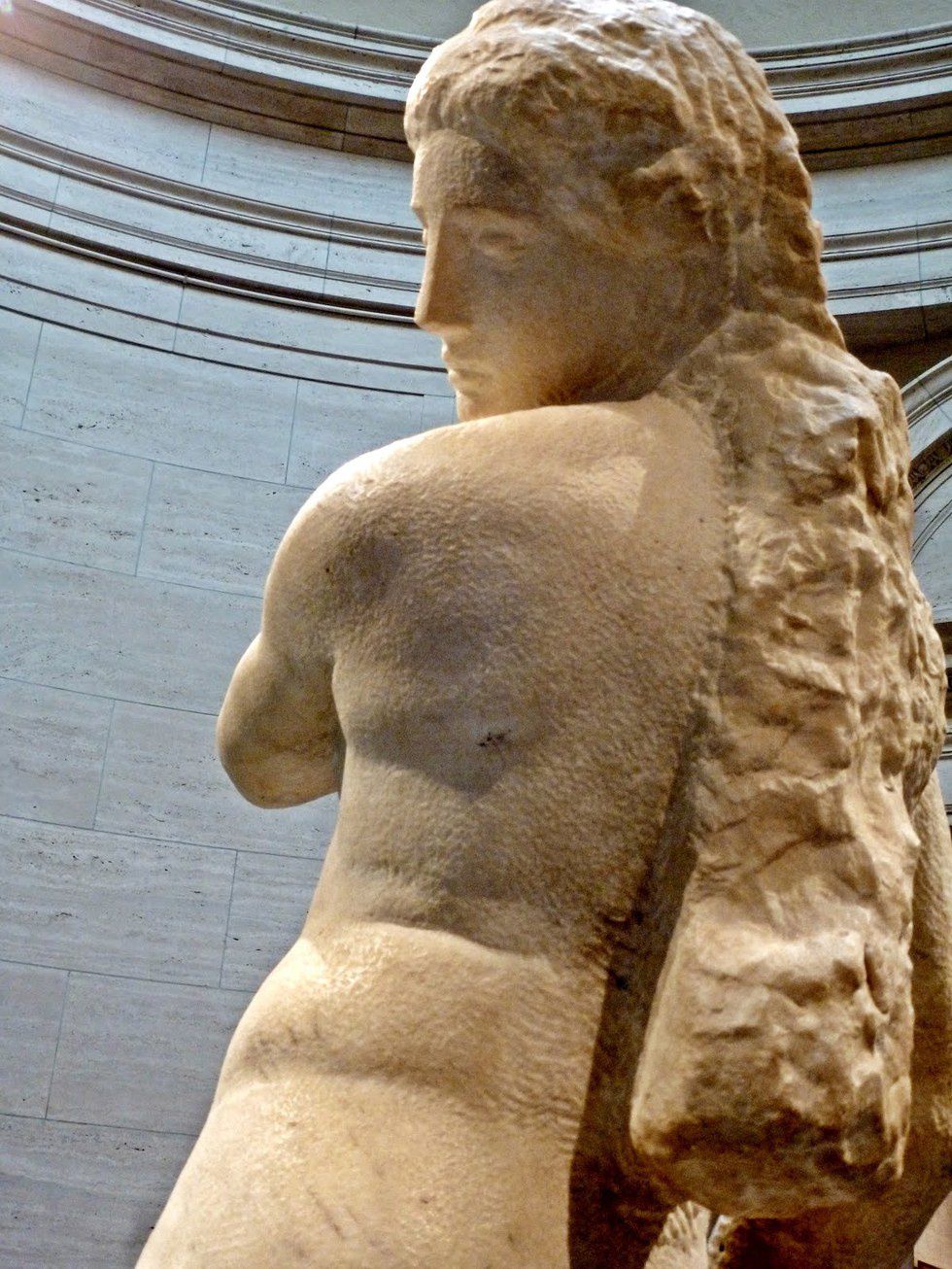Pure, white, marble. Emotion frozen in stone. Michelangelo was the master sculptor. Ever since I read "The Agony and the Ecstasy" as a child, the story and work of Michelangelo has captivated my mind. When I was in Italy last semester, I got the chance to see his magnificent work in person. The sculpture which stood out to me the most, though not well known, is the "David-Apollo."
A drawing from my sketchbook while in front of the sculpture.
The "David-Apollo" lets us look into the mind of the maker, as it was never finished. Not only is the sculpture incomplete, revealing its creation, the subject is also ambiguous and undecided. Is the mysterious twisting youth a Christian David or a secular Apollo? Could the figure possibly represent both figures simultaneously? If this figure is David, is he not both the pensive and victorious David at the same time? This sculpture raises questions with answers that will never be determined for sure.The "David-Apollo" has mood. The figure is reflective, looking inward and lost in his own world. The body twists around in a spiraling serpentine pose supported by an unfinished mound upon which the right foot rests. This drives the right knee upward into a perfectly balanced contrapposto. This stance is full of potential energy, a half-relaxed stance of a powerful body. The left arm reaches up across the chest, while the head turns to the left. This same arm seems to either be supporting or reaching for a long, unfinished form flowing down the back. The right hand is still attached to the hip, and the rear of the statue is supported by a tree trunk. It is clear that the rectangular protrusion running down the back was once connected directly to the tree trunk, cut away into a seemingly impossible negative space. The body ripples with muscle, and the shadows catch the forms of the body in a very subtle way because of the texture of the chisel marks. These marks are long drives with the chisel, and they cover the body like crosshatching. They follow the contours and give definition. The face seems as if it is still a sketch, as nothing is clearly defined, yet it still manages to carry a calm, elegant expression that is almost caught in dream state.
Upon my own observation, I believe there is much evidence that points at the figure’s identity being David. The most obvious would be the mound the right foot is resting on. This could easily be transformed into the head of a Goliath. It is easy to imagine the rectangular shape wrapping around the back could have been whittled down to a sling similar to the one Michelangelo’s earlier colossal David holds. The right hand could also be holding a stone that would fit into the sling on his back. The most interesting thing about having all of those symbols in the same place is that this sculpture would become a complete narrative of before and after the slaying of Goliath. The entire story distilled into one stone.
On the other hand, if this was intended to be a depiction of Apollo, then the mysterious mounds of stone would have been transformed into other symbols. Writer Karen Wilkin discuses a few theories in her article An Incomplete Mystery. Wilkin believes the raised lump could have been transformed into a tortoise. The tortoise was considered to be the leader of the Muses, and therefore would be associated with Apollo because he was god of the arts. Down the back, there is a rectangle of marble that she thinks could be Apollo’s bow and quiver of arrows.
I can't help but think that if this figure is David, it is quite different from the earlier "David" all of the world knows. That David is confident and sure of himself. He stands ready to send his stone sailing at the Goliath that he is staring down. The sculpture towers over the heads of ordinary people as an ideal hero of Florence. The later, much smaller "David-Apollo" is sensual and reflective. It is not a distilled moment, but instead an ambiguous figure that doesn’t reside in time. If he is David, he rests both before and after his heroic act. There is a sense of despondency, as if he regrets the blood that he has shed.
As is, the "David-Apollo" is a mystery, but his ambiguity makes him all the more interesting.





















